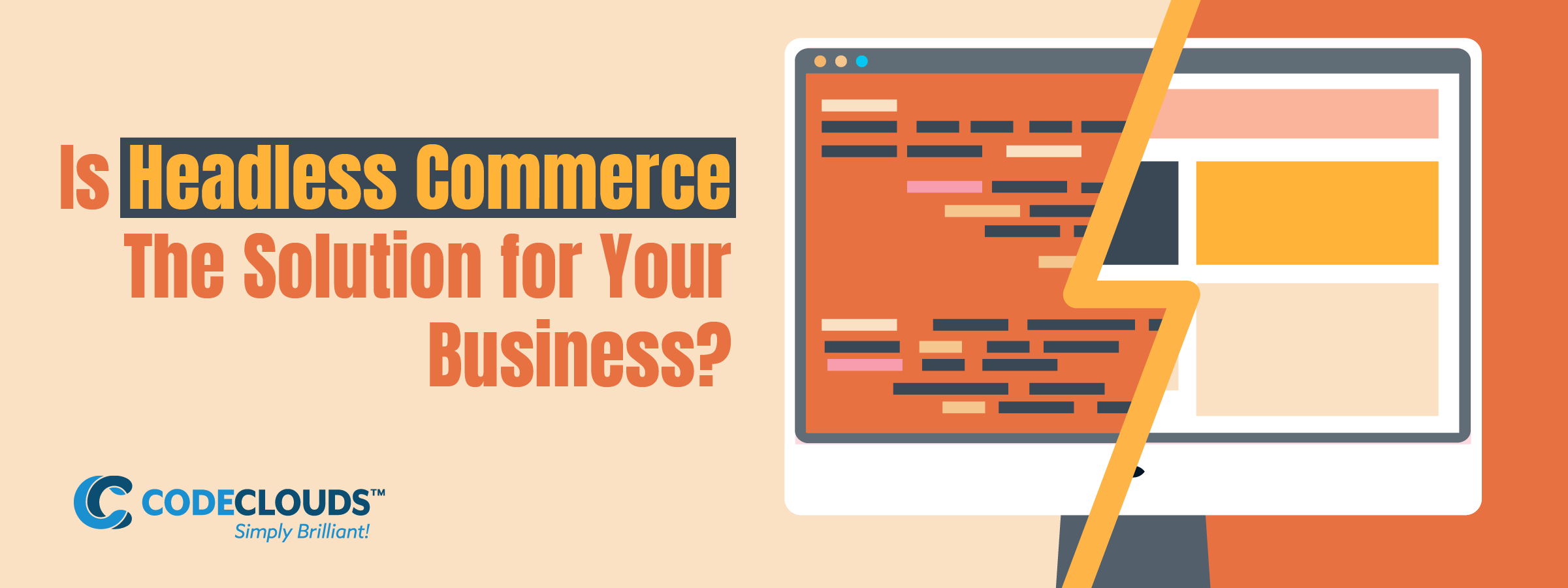Overview
Headless commerce is a relatively new concept in the eCommerce and one you can’t ignore. So should you try separating the backend and frontend of your eCommerce store? Or stick with a traditional all-in-one eCommerce platform? Well, it depends!

Headless commerce has many benefits, but is it right for everyone? What makes it ‘headless’ in the first place? Let’s take a closer look.
What Is Headless Commerce?
Headless commerce is when your eCommerce platform’s backend and front end are separated—your CMS provider runs the backend. At the same time, you have complete control over the frontend (which is connected to the backend via APIs).
Unlike in a traditional eCommerce platform where you have a choice of templates to build your front-end, the front-end in headless is a blank canvas, which can then be developed into the perfect interface for your business.
Why Should You Use Headless Commerce?
The coding involved in headless eCommerce makes it a bit more difficult to manage than a traditional eCommerce platform. So why should you use it? Here are some reasons:
- Customization: The decoupled, blank frontend means you have endless customization opportunities compared to a traditional eCommerce platform with ready-to-use templates. This extra flexibility makes mobile optimization and building the perfect interface for your business much easier.
- It’s faster (and cheaper) than building from scratch: A headless platform is easier and more agile to code than building a platform from scratch because you don’t have to think about the backend. All that’s necessary is a bit of coding and design, which makes a headless commerce platform quick to market.
- Easy to update: As you don’t have to worry about the backend, it’s easy to perform updates in a headless commerce platform. Even better, your updates will load immediately, with no minutes (or even hours) long lag for your customers.
- Better UX: Because headless eCommerce platforms can be faster and you can provide advanced functionality and user-tailored experiences for users and admin, headless commerce provides better UX.
- Cross-platform/IoT uses: The freedom from a platform-specific backend means you can adapt your front-end design to other platforms and devices. This opens up exciting new possibilities: you can now run your eCommerce interface (with consistent branding) across IoT devices like smartwatches or in-store kiosks and with Siri and Alexa.
- Super easy app integration: As headless eCommerce platforms use APIs by definition, you already have the API infrastructure you need to integrate apps like Slack or payment processors into your headless site.
- Plenty of options are already available: Major eCommerce platforms such as Magento, Shopify, and BigCommerce already offer headless versions. There are also plenty of specialized headless options out there, such as Swell.
Is Headless Commerce Right for Your Business?
Headless commerce does have its downsides and is not the best choice for everyone. Let’s have a look at the factors that you should consider before taking your site headless:
Headless Is Ideal For Enterprises (But Not So Much for Small Businesses)
To use headless commerce, you must have designers and developers by your side. This is fine for large businesses, who have their own tech and design teams but it can be an issue for smaller businesses. (And remember this doesn’t just apply to the setup, these experts will also need to be available for updates and maintenance).
Moreover, enterprise-scale businesses will benefit more from headless commerce features such as advanced functionality and compatibility with IoT devices, as these features will probably be superfluous for smaller businesses and startups.
Headless Isn’t Great for Marketers and Content Writers
Headless commerce platforms often lack the ability to preview content in the same way as a traditional eCommerce platform. Due to the need to code in a headless platform, content writers and marketers cannot just add content themselves, but must rely on devs to upload content. Not only is this not very agile, but it is also another reason some small and medium businesses may get blocked out from of headless commerce.
What If My Small Or Medium Sized Business Wants To Try Headless Commerce?
Fortunately, trying headless commerce (or something similar) as a smaller business without your IT and design teams is still possible. You have two main options:
Try Decoupled eCommerce
A decoupled eCommerce platform such as Contentful and CoreDNA is a headless commerce platform where the frontend has all of the templates and preview capacity it would have in a traditional eCommerce platform. This means you can still receive some of the benefits of headless commerce without employing developers and designers.
Hire An Offshore Development Team
If you’re keen to experience the full power of headless, another option is hiring a dedicated development team to develop and design your headless frontend. Offshore developers like CodeClouds are good value for money and offer reasonable continued support packages to help you with updates and maintenance.

In sum, headless commerce could be a great option for your business, if you want a highly customisable frontend compatible with different platforms and devices, and have affordable development and design.
Want to try headless BigCommerce and don’t have a dev team? It’s still possible! Hire an industry-leading BigCommerce Development Agency and top creative design experts from CodeClouds to experience this innovation in eCommerce for your business.
Share this article
325 reads
Similar Reads








